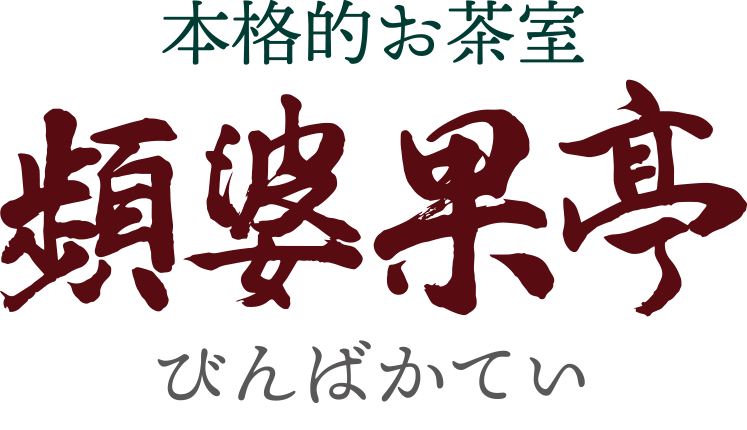
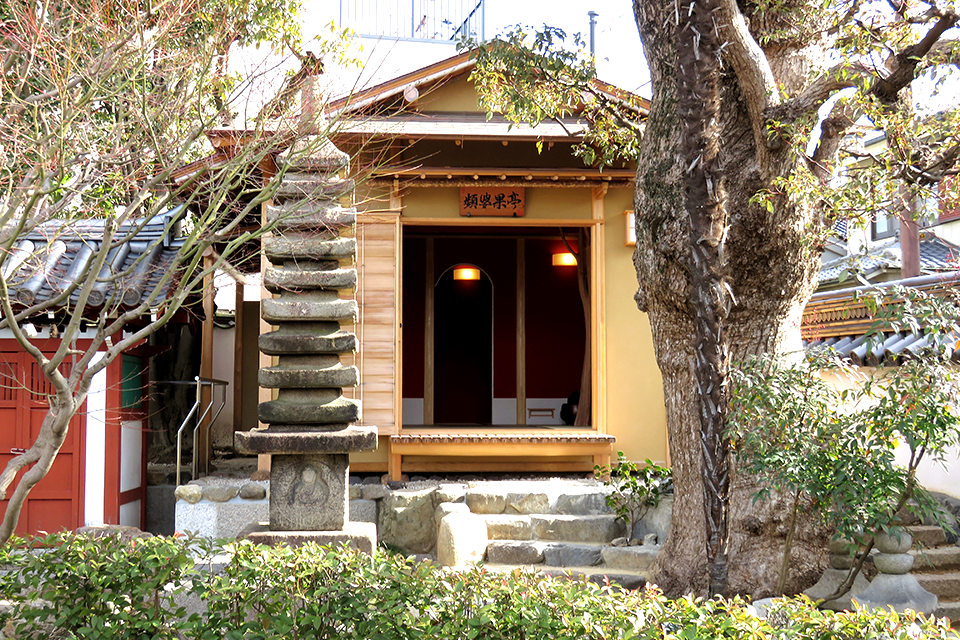
頻婆とは、インド原産の植物です。真っ白な花に真っ赤な実をつけます。仏さまの容貌のひとつに「唇は頻婆の果実のように赤い」と表現されています。頻婆果亭室内の壁は赤褐色に仕上げています。赤は命、情熱、活力など、人が生きるために必要なものと多く結びついています。お茶を味わいながら、生きる力を感じていただきたく存じます。
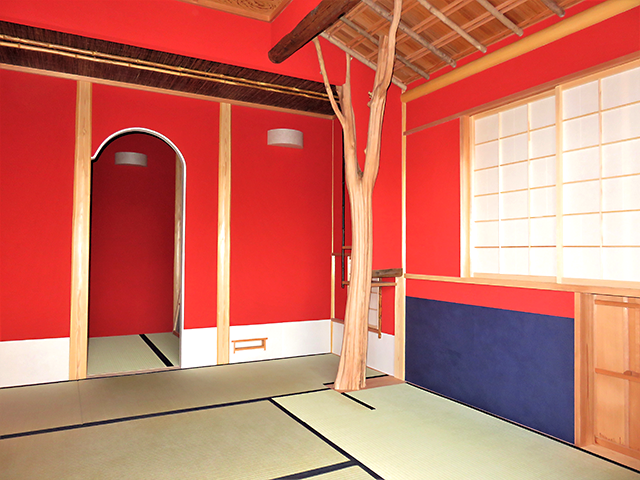
Bimba is a plant of Indian origin with white flowers and red fruit. Buddha's lips were said to be red as bimba.Aizu Yaichi(a famous Japanese poet) once described that people prefer the unrestored works of art. In original portrayals of Buddha, his lips are supposed to have been burning the color of bimba fruit. Likewise, the walls of the bimbakatei tea room are painted crimson. Red symbolizes lifeforce, passion, joy, that which allows one to live a full life. We want everyone to enjoy tea and feel the power and energy of life.
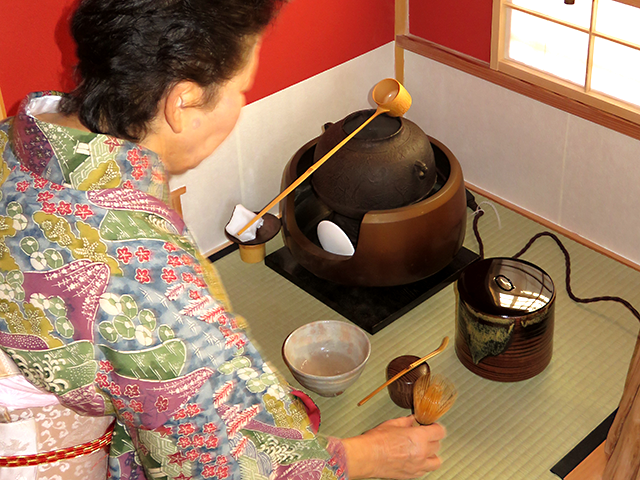
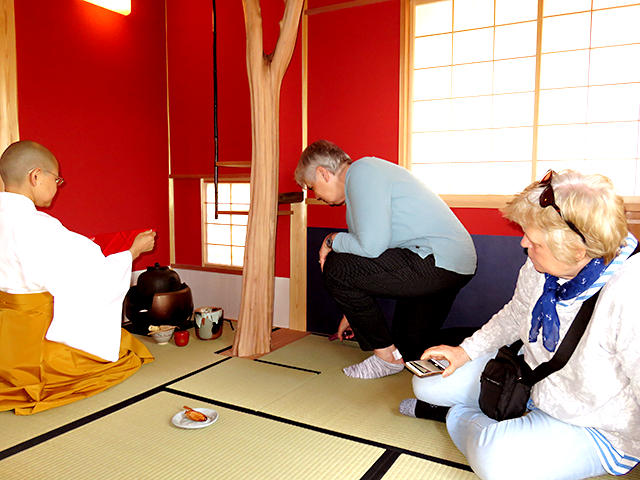
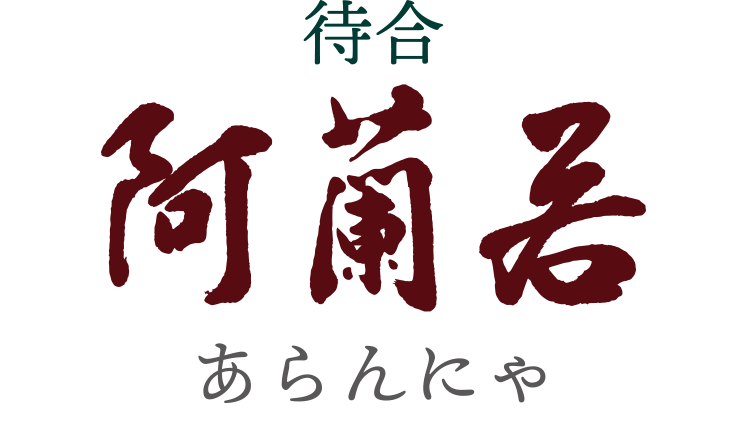
梵語aranyaの音写で、出家者が修行するための静かな場所を意味します。
この東屋は島根県の海岸に林立する松を使用しています。屋根の反りは日本海からの北風で自然にできたものです。お茶席の待合として使用しています。
静かな境内で庭園を眺めながら自身を見つめてくださるのもいいかもしれません。
The Sanskrit word Aranya means a secluded or quiet place for the practitioner of Buddhism. The pavilion is constructed with pine trees from the coast of Shimane Prefecture. The curve and swoop of the roof is a natural form, created by the north wind from the Japan Sea.
You can wait in the Aranya prior to taking tea.
JURIN-IN TEMPLE Jurin-in, located in Naramachi, was founded by the Emperor Gensho (715-24), in the Nara Era. Originally, Jurin-in temple was the sub-temple within Gango-ji, one of the seven great temples of Nara.
The Main Hall, designated a national treasure was built in the Kamakura Era (12th century).In the Main Hall, stone images of Jizo-bosatsu as a main Buddha, Shaka-nyorai, Miroku-bosatsu, and many buddhas are enshrined.These buddhas conduct people to the Buddhist Paradise after death.
From JR Nara Station: Approx.15.min.by Nara kotsu bus (bound for Tenri, boarding at platform 1, outside the East Exit) Then a 1-min. walk from the Fukuchiin bus stop
From Kintestu Nara station: Approx. 8min. by Nara kotsu bus (bound for Tenri, boarding at platform 3) Then a 1-min. walk from the Fukuchiin bus stop
Copyright © JURININ All rights reserved.